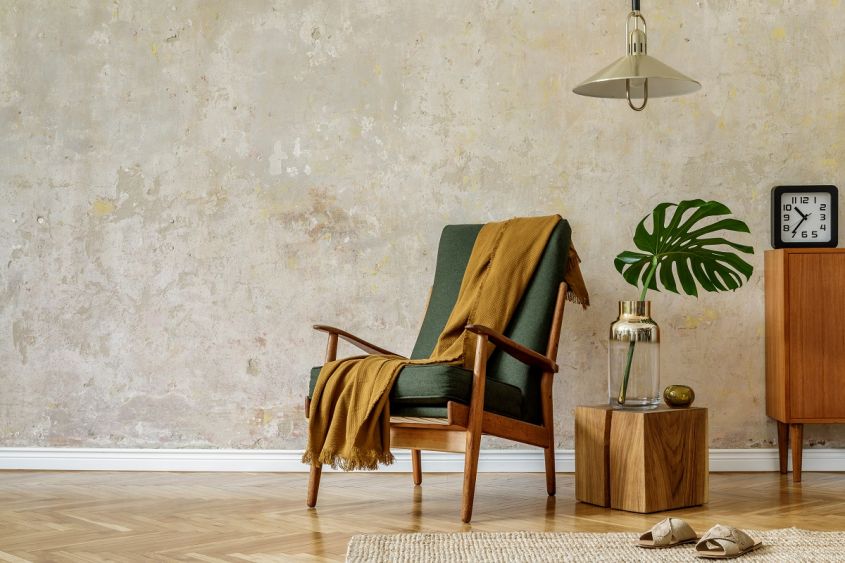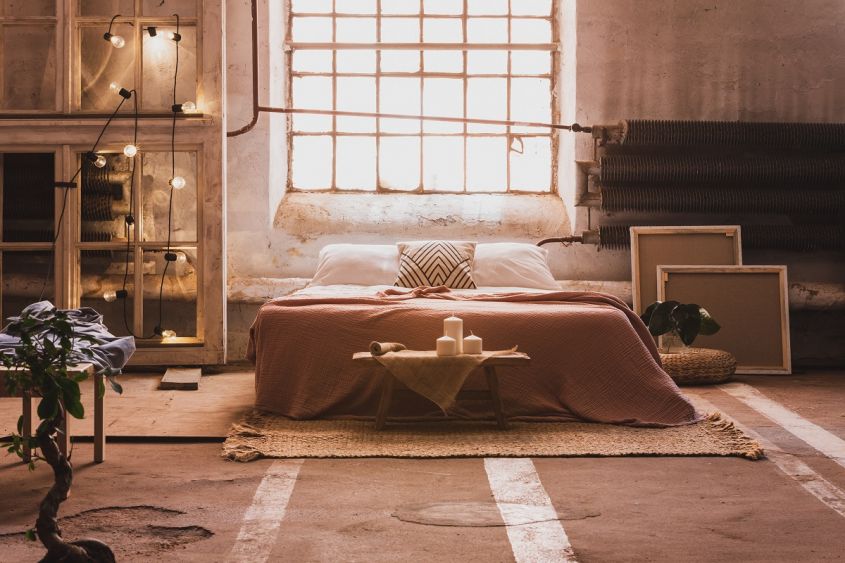The poignant and discreet beauty of time that passes: this is how we could summarize the meaning of wabi-sabi, a philosophy that comes from Japan and is becoming increasingly popular in the West as well. Its aesthetic application in the field of furniture and interior design refers to some principles that dictate the guidelines of a real lifestyle in the name of naturalness, of the naturalness, of the simplicity and acceptance of the defects and gods signs left by time and wear.
If the Japanese style, that is the mix between Japanese and Scandinavian design, is already more and more appreciated, here we are facing the next step, where the house is not only minimalist, but it is made representation of a way of understanding existence, influencing practices and choices.
 Shutterstock Photo | Followtheflow
Shutterstock Photo | Followtheflow
What is wabi-sabi
The Japanese are very concerned with the concept of beauty obtained from imperfection, as evidenced by theart of kintsugi: for the Zen philosophy, it is necessary to accept that everything changes and transforms itself, that it ages, acquiring charm and wisdom. Even objects acquire over time greater personality because they tell how they were used and lived. Applied in life, all this translates into knowing accept events without obsession with perfection and the urge to repair, fix or replace.
In particular, the wabi-sabi is based on 7 key concepts: Kanso (simplicity), Fukinsei (asymmetry or irregularity), Shibumi (beauty in sobriety), Shizen (unpretentious naturalness), Yugen (subtle grace), Datsuzoku (freedom) and Seijaku (tranquility).
How to furnish
In the aesthetic concretization of this way of approaching life, they choose themselves natural, resistant and living materials, which absorb time and change, like wood, stone or bamboo, but also i raw fabrics especially in linen and cotton. Their uniqueness lies in the irregular details that make each piece special. Veins, chips, marks are all vital characteristics.
Even the objects and accessories must not come from mass production but be created by the hands of the artisans and therefore in turn have small imperfections that make them special.
 Shutterstock Photo | Followtheflow
Shutterstock Photo | Followtheflow
Then, of course, everything that has already had a life before is welcome: having already been handled, having already furnished a house will give the complement or piece of furniture even more charm. It is necessary to choose quality elements that guarantee durability over time: the sustainability, the recycling and the fight against waste they are the basis of wabi-sabi.
The decor in general is minimal: excess is a distraction from what really matters, therefore everything must be functional and strictly necessary.
THE dominant colorsfinally, of course they are soft and natural to spread a sense of tranquility in the home nest and stimulate rest and serenity. Green light therefore to the tones of the earth and the sand, the grays and whites of the stone: the colors of nature are all welcome to create this oasis of psychological and physical well-being, which allows you to recharge your batteries and find yourself in an increasingly frenetic society.
In the wabi-sabi house everything must be authentic, like the spirit of those who live there, indeed, live it: welcoming imperfection is life towards a happiness made up of simple but real things.
 Shutterstock Photo | Photographee.eu
Shutterstock Photo | Photographee.eu


